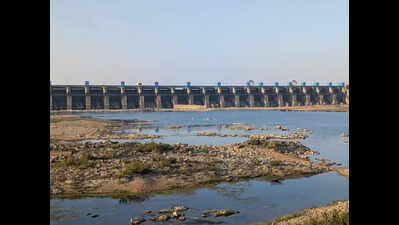Live storage slightly lower in Nagpur dams, marginally up in Amravati compared to last year - The Times of India

Nagpur: With summer just beginning and temperatures already crossing 44°C in several parts of Vidarbha, concerns are being raised over water storage levels in the Nagpur and Amravati regions. The latest state reservoir report of April 12 shows Nagpur at 42.20% and Amravati at 50.58% of their designed live storage capacities. While Amravati was a slight improvement over the levels last year, Nagpur recorded a dip.
As of April 12, Nagpur region's live storage across major, medium, and minor dams dropped to 1,944 million cubic meters (MCuM) from 2,914 MCuM (46.89%) a year ago. Despite this, the Nagpur Municipal Corporation (NMC) was granted a higher annual drawing limit of 181.74 MCuM, up from 176 MCuM, to support its expanding pipeline network. The city currently draws around 740 million litres per day from Totladoh and Kamthi Khairy reservoirs.
Totladoh, the region's most reliable source, is at 59.33%, almost the same as last year. Kamthi Khairy is holding a healthy 75.83%, but Gosikhurd, Nagpur's largest in capacity, fell sharply to 30.21%, down from 41.19%. Smaller projects show more stress, like Dhapewada in Gondia is at 26.58%, and Nand in Nagpur just 13.07%, impacting rural water supply and irrigation.
In contrast, the Amravati region slightly improved, with total live storage at 1,912.73 MCuM, up from 49.49% last year. Isapur, the region's largest dam, is at 55.97%, followed by Upper Wardha at 49.84% and Bembla at 34.65%. However, some dams remain critically low — Khadakpurna in Buldhana is at a mere 4.12%, and Katepurna in Akola stands at 27.21%.
Though not yet in crisis, the uneven storage levels and rising temperatures highlight the need for efficient water use and pre-monsoon planning. With nearly 58% of reservoir space empty, officials may have to consider rationing and other targeted interventions to avoid shortages in the peak summer months.









